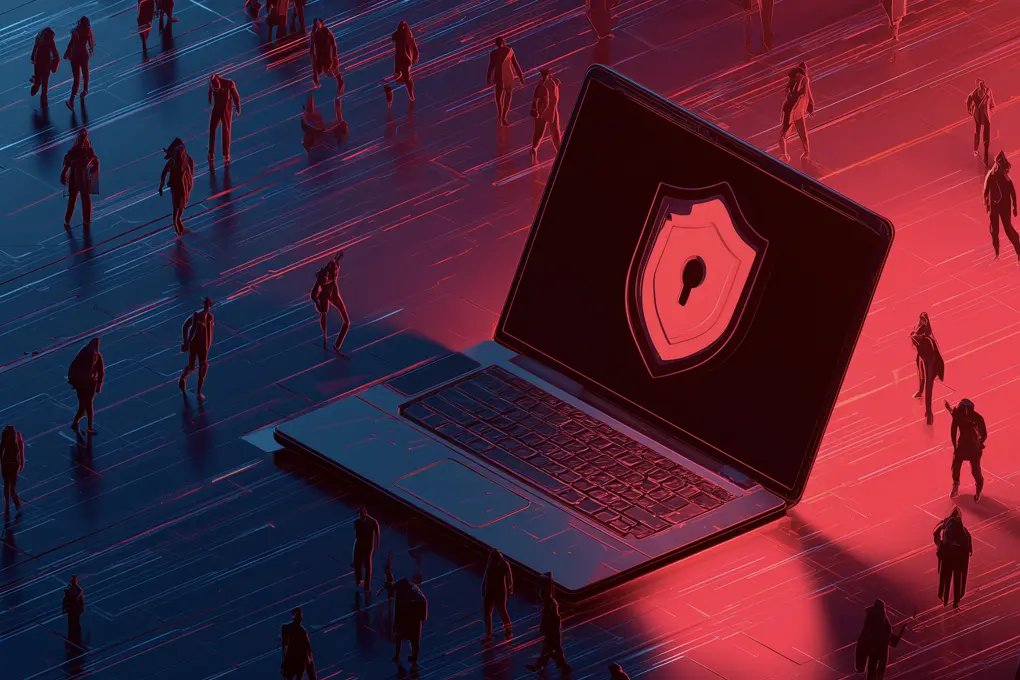Quick Answer: To prevent cyberbullying, parents should combine open communication, privacy checkups, and smart monitoring tools with empathy and support. The best cyberbullying tips for parents include teaching kids digital responsibility, watching for warning signs, and knowing how to stop cyberbullying with timely reporting and evidence collection.
Imagine opening your child’s phone and finding cruel messages, rumors, or even explicit images they never asked for. As a parent, the instinct to protect your child is immediate, but knowing how to stop cyberbullying isn’t always clear. That’s why learning effective cyberbullying tips for parents has never been more important.
Nearly half of U.S. teens ages 13 to 17 (46%) say they’ve experienced at least one form of online harassment, from offensive name-calling (32%) to false rumors (22%), according to Pew Research Center.
For tweens, the picture is just as concerning – one in five kids aged 9 to 12 has already been cyberbullied, witnessed it, or taken part in it, according to PACER. Research also shows these experiences can trigger depression, anxiety, and even physical health problems .
If you want to prevent cyberbullying and protect your child’s well-being, the first step is knowing what it looks like, how it impacts kids, and what practical steps you can take to stop it before it escalates. This guide will walk you through exactly that.
Contents
- Key Takeaways
- Modern Cyberbullying: Beyond Simple Name-Calling
- Building Your Family’s Cyberbullying Prevention Framework
- Implementing Technical Safeguards That Actually Work
- When Prevention Isn’t Enough: Responding to Active Cyberbullying
- Supporting Your Child Through the Emotional Aftermath
- Addressing the Difficult Truth: When Your Child Is the Bully
- Using Technology for Proactive Protection
- Creating Long-Term Digital Resilience
- The Hidden Dangers: Understanding Cyberbullying’s Connection to Broader Online Threats
- Measuring Success: Key Indicators Your Prevention Strategy Is Working
- Taking Action: Your Family’s Cyberbullying Prevention Roadmap
- Conclusion: Empowering Your Family’s Digital Future
- Frequently Asked Questions
- Sources
Key Takeaways
- Prevent cyberbullying by combining communication, family agreements, and technical safeguards that create a safe online environment for children.
- Modern cyberbullying extends beyond name-calling and includes impersonation, rumor spreading, image-based abuse, and coordinated attacks.
- Warning signs include sudden device avoidance, deleted accounts, sleep disruption, mood swings, and declining academic performance.
- Cyberbullying tips for parents include regular privacy checkups, teaching empathy, and using monitoring tools like Bark that identify problems early.
- When prevention fails, know how to stop cyberbullying by documenting evidence, using reporting tools, and involving schools or law enforcement.
- Children need emotional support after cyberbullying, including validation, gradual re-entry into online spaces, and sometimes professional counseling.
- Protect your family with Batten Cyber’s curated parental control solutions, giving you tools to prevent cyberbullying while building digital resilience.
Modern Cyberbullying: Beyond Simple Name-Calling
Cyberbullying today is far more complex than it once was. Unlike traditional bullying, which ended when children left school grounds, online harassment follows them home.
Smartphones, tablets, and gaming consoles turn what should be safe spaces into constant battlegrounds – there’s a direct correlation between the increased use of smartphones and the rise of cyberbullying, as well as the negative consequences of cyberbullying.
The aggressors may be classmates, gaming opponents, or even strangers who gain access to a child’s digital life.
Forms of Modern Cyberbullying
Parents often think of name-calling when they imagine cyberbullying, but the reality is much broader. Some of the most common forms include:
- Digital Exclusion: Intentionally leaving someone out of group chats, online games, or collaborative projects.
- Rumor Spreading: Circulating false or damaging stories rapidly through social media or messaging apps.
- Impersonation: Creating fake accounts to harm reputations or disrupt friendships.
- Image-Based Abuse: Sharing humiliating photos or videos, or making memes to embarrass the victim.
- Coordinated Attacks: Multiple people targeting one individual across several platforms at once.
- Gaming Harassment: Combining abusive voice chat with in-game sabotage to isolate and attack victims.
Gaming environments deserve special attention. Many children face simultaneous harassment from voice chat and gameplay, leaving them with few safe spaces to enjoy what should be a recreational activity.
Warning Signs Your Child May Be Experiencing Cyberbullying
| Behavioral Changes | Emotional Signs | Physical Symptoms |
| Sudden device avoidance | Mood swings after checking messages | Unexplained headaches |
| Deleting social accounts | Increased anxiety or withdrawal | Stomach aches before school |
| Secretive online behavior | Angry outbursts over small issues | Disrupted sleep patterns |
| Declining grades | Loss of interest in activities | Changes in eating habits |
| Making excuses to stay home | Depression or sadness | Fatigue from stress |
Many parents report noticing their children suddenly deleting accounts or hiding their screens when asked about their online activities. These behaviors often signal that something serious is happening.
Why Cyberbullying Feels Overwhelming
What makes cyberbullying particularly damaging is its persistence. Unlike playground conflicts that fade after school, online harassment can happen at any hour.
Hurtful messages can be saved through screenshots, spreading far beyond the original audience. What may appear minor to an adult can feel unrelenting and inescapable to a child, who may see humiliation broadcast to an unlimited online crowd.
Building Your Family’s Cyberbullying Prevention Framework
Preventing cyberbullying begins with creating a home environment where children feel comfortable sharing their online experiences. This requires more than installing parental controls. It means building trust, teaching digital responsibility, and fostering emotional support systems that encourage openness instead of secrecy.
Creating a Family Technology Agreement
One of the most effective starting points is developing a family technology agreement. Involve your children in the process rather than imposing rules. Together, set boundaries around online communication, screen time, and digital behavior.
When kids help create the rules, they better understand the reasons behind them and are more likely to follow them. This approach also creates space for important discussions about why protecting personal information matters and how online actions can impact others.
Teaching Empathy and Responsible Online Behavior
Children often need guidance to connect their online actions with real-world consequences. Role-playing activities can help them recognize how hurtful messages or exclusion feel from the perspective of a victim.
Discuss how jokes may be misinterpreted, how tone can be lost in text, and why it is important to pause before posting. These conversations naturally extend into talking about bystanders and how to become an “upstander” by reporting harmful behavior instead of ignoring it.
Practicing Regular Privacy Checkups
Privacy settings across platforms should not be a one-time setup. Instead, make it a monthly family routine.
Monthly Privacy Checkup Routine
- Review friend and follower lists together and remove unknown contacts
- Check what personal information is publicly visible
- Update blocking lists when necessary
- Test privacy settings with a parent’s separate account
- Discuss new apps or platforms your child wants to use
- Practice using block and report tools as a family
By practicing these steps regularly and creating a comprehensive cybersecurity plan, children gain confidence in setting digital boundaries and learn that protecting themselves online is both normal and necessary.
Encouraging Device-Free Family Conversations
Technology-free times are just as important as digital monitoring. Designate specific hours for family activities without screens. These relaxed moments allow natural conversations about both online and offline experiences. When children are used to sharing openly, they are more likely to mention issues early, before they grow into serious problems.
Implementing Technical Safeguards That Actually Work
While open communication is the foundation of prevention, technical safeguards give parents extra support. Modern parental control solutions now go far beyond simple website blocking, providing tools that balance supervision with a child’s growing independence.
Using Smart Monitoring Tools
Advanced monitoring apps use artificial intelligence to flag concerning content without overwhelming parents with every detail. For example, Bark analyzes communications across more than 30 platforms for signs of cyberbullying, depression, or inappropriate content, and then sends context-based alerts. This lets parents step in at the right time without resorting to constant surveillance.
Leveraging Platform-Specific Features
Each platform offers its own safety tools that can help reduce exposure to harassment. For instance, Instagram’s Restrict feature allows kids to limit interactions without directly blocking classmates. Gaming consoles like Xbox and PlayStation let parents restrict voice chat to approved friends, cutting down on random harassment from strangers. Learning how these tools work gives families practical ways to build multiple layers of protection.
Monitoring Location and Screen Time Patterns
Location tracking and screen time reports also provide valuable insight. A child who claims to be at a friend’s house but shows up elsewhere might be avoiding social situations due to bullying. Similarly, sudden spikes in late-night device use could signal that your child is anxiously checking for new messages. Recognizing these patterns can open important conversations.
Combining Technology With Conversation
Technology is most effective when paired with consistent dialogue. If a monitoring tool flags a concerning message, address it with curiosity instead of accusation. For example, ask: “I noticed you seemed upset after being online yesterday. Do you want to talk about what happened?” Approaching the situation this way helps maintain trust while addressing issues before they escalate.
When Prevention Isn’t Enough: Responding to Active Cyberbullying
Even with the strongest prevention measures in place, some families will still face active cyberbullying situations. How you respond in those first moments matters greatly. A calm, prepared approach can prevent escalation and help your child feel supported rather than isolated.
Collecting and Preserving Evidence
The first step in any response is documentation. Preserving evidence ensures that schools, platforms, or authorities can take meaningful action. Parents often delete harmful content to shield their child, but this can erase critical proof.
Evidence Collection Checklist
✓ Screenshot harassment in full context, including surrounding messages
✓ Save original URLs or direct links to posts and profiles
✓ Record timestamps with dates and times of incidents
✓ Document witnesses by noting usernames of those present
✓ Save unedited versions of images or videos before cropping
✓ Create secure backup copies in multiple locations
✓ Note platform details, including the app, website, or game used
Organize the evidence chronologically in a dedicated folder. Include brief notes explaining where the incident occurred and who else may have seen it. Having a complete record helps when presenting the case to school officials, reporting to platforms, or considering legal steps.
Using Platform Reporting Tools Effectively
Most platforms provide reporting tools, but their effectiveness varies. Social media sites like Instagram and TikTok allow you to report harassment directly through the offending post or account. Gaming platforms often provide options to mute, block, or report abusive players through in-game menus.
It is important to understand these processes before a crisis occurs. Practice using reporting features with your child during calm moments, so they know what steps to take if harassment happens. Encourage them to block the bully immediately after saving evidence, reducing exposure while you pursue formal reporting.
Involving Schools and Authorities
When bullying involves classmates, schools often play a key role in resolution. Provide administrators with clear documentation and request a meeting to address the issue. If threats of physical harm are involved, or if the harassment escalates into stalking or image-based abuse, law enforcement may need to be contacted.
In the United States, laws vary by state, but many classify online threats and repeated harassment as criminal offenses. Knowing your local regulations and school policies can help you act quickly and effectively.
Quick Reference: Platform Reporting Guide
| Platform | Reporting Method | Typical Response Time | Additional Actions |
| Report button on posts/profiles | 24-48 hours | Use “Restrict” feature for classmates | |
| TikTok | Long-press video > Report | 24-72 hours | Enable comment filtering |
| Snapchat | Hold message > Report | 24 hours | Block user immediately |
| Discord | Right-click message > Report | 48-72 hours | Report to server moderators first |
| Roblox | In-game report or website form | 24-48 hours | Screenshot avatar/username |
| Xbox Live | Report via console or website | 24-72 hours | Block communications |
| Settings > Report Contact | No guaranteed response | Block and delete contact |
Creating a Quick Reference Guide
Parents can prepare for emergencies by building a quick reference guide that lists reporting procedures for their child’s most-used platforms. Include direct links to reporting pages for Instagram, TikTok, Snapchat, YouTube, and popular gaming platforms. Keep both digital and printed versions in an easy-to-access location so your child knows exactly where to go if harassment occurs.
Working With Schools
When cyberbullying involves classmates, school intervention is often essential even if the incidents happen outside school hours. Most school districts now have specific cyberbullying policies acknowledging that online harassment directly affects the learning environment. Schedule face-to-face meetings with administrators rather than relying solely on email.
Bring organized evidence and make clear requests for action. Ask about the investigation process, expected timelines, and specific steps to prevent retaliation against your child. Some schools also provide mediation or restorative justice programs that focus on addressing the root causes of bullying behavior while supporting the victim.
Considering Legal Action
In severe cases involving threats, stalking, or distribution of intimate images, legal options may be necessary. Many states have cyberbullying laws that classify such behavior as criminal, with penalties ranging from misdemeanors to felonies depending on severity and the age of those involved.
Families should consult attorneys who specialize in digital harassment to determine whether the case meets the threshold for criminal or civil action.
Document all associated costs, including therapy sessions, relocation expenses, lost wages from missed work, or tuition if a school transfer becomes necessary. These records can support civil lawsuits aimed at recovering damages while also holding perpetrators accountable.
Supporting Your Child Through the Emotional Aftermath

The emotional scars from cyberbullying often remain long after the harassment ends, requiring steady parental support. Many children develop anxiety, depression, or trust issues that affect school, friendships, and even family life. Addressing these challenges requires patience and a layered approach.
Validating and Listening First
How you respond when your child discloses cyberbullying sets the tone for healing. Avoid minimizing comments like “just ignore them.” Instead, acknowledge their pain with statements such as “That sounds really hard” or “Thank you for sharing this with me.” Validation helps children feel safe and supported before discussing next steps.
When Professional Help Is Needed
Some children need outside help to process the experience. Warning signs include disrupted sleep, academic decline, social withdrawal, or talk of self-harm. School counselors can provide immediate support, while therapists specializing in adolescent trauma often use cognitive-behavioral therapy to help reframe negative thoughts. Group therapy also provides reassurance by connecting children with peers who have faced similar struggles.
Rebuilding Digital Confidence
Helping children regain comfort online should be gradual. Start with safe, low-stress activities such as single-player games or creative platforms. If necessary, set up new accounts with tighter privacy settings to create a fresh start. Teaching your child to actively manage their digital boundaries empowers them to feel in control of their online presence again.
Supporting the Entire Family
Cyberbullying often affects siblings and parents too. Siblings may feel helpless watching the situation unfold, while parents may struggle with guilt or anger. Family therapy sessions can strengthen communication, reduce stress, and ensure everyone feels included in the healing process.
Addressing the Difficult Truth: When Your Child Is the Bully
Discovering your child has bullied others online can trigger shock, guilt, and frustration. However, your response shapes whether they learn from the experience or repeat harmful behaviors. Accountability and education must come before punishment.
Understanding the Causes
Children may bully to gain social status, retaliate for being bullied themselves, or because they underestimate the impact of digital actions. Some join group harassment to fit in, while others may use aggression as a coping mechanism for stress or insecurity. Recognizing these motivations helps you address the underlying issues.
Proportional Consequences
Discipline should be firm but constructive. Temporarily restricting device use shows seriousness, but complete isolation can backfire. Instead, introduce supervised device use in shared spaces. Review interactions together and discuss healthier communication strategies. This helps children practice better behavior rather than just endure restrictions.
Teaching Empathy and Responsibility
Restorative practices can be powerful. Encourage your child to write an apology, create a project about the harms of cyberbullying, or participate in community service. These actions help them recognize the consequences of their behavior and build empathy. Supervised apologies to victims may also help, provided they are safe and appropriate.
Long-Term Monitoring
Continued oversight is critical after an incident. Use parental controls that alert you to concerning messages and schedule regular check-ins about online activity. Frame these conversations as opportunities to learn, not interrogations. Role-playing online scenarios can also prepare children to handle digital conflicts without aggression.
Data Point: A U.S. study of nearly 4,000 middle schoolers revealed just how common cyberbullying can be. In the span of only two months, about 1 in 9 kids said they had been cyberbullied, 1 in 25 admitted to bullying others online, and nearly 1 in 14 had been both a victim and a perpetrator.
Using Technology for Proactive Protection
Technical tools can help families prevent cyberbullying before it escalates. When used alongside open communication, they create layered protection that supports both safety and independence.
AI-Powered Monitoring
Some monitoring apps analyze conversations for harmful patterns, flagging signs of harassment or self-harm. These alerts allow parents to intervene early, while still respecting their child’s privacy by avoiding unnecessary message-by-message surveillance.
Managing Device Use With Time Controls
Many cyberbullying incidents occur late at night, when children are more vulnerable. Setting device curfews through apps or router settings reduces exposure to harmful interactions and helps ensure healthier sleep patterns.
Filtering Out Harmful Content
Advanced parental controls can block outgoing messages with threats or offensive language before they are sent. This feature works like training wheels, guiding children toward healthier online behavior while preventing harm in the moment. Parents considering comprehensive monitoring should look at alternatives to popular apps like Bark to find solutions matching their family’s specific needs and values.
Encouraging Anonymous Reporting
Schools increasingly use anonymous reporting apps that allow students to flag cyberbullying without fear of retaliation. Parents should teach children how to use these tools both to protect themselves and to support peers who may be suffering in silence. When combined with home-based monitoring, these systems provide a strong safety net.
Creating Long-Term Digital Resilience
Helping children build resilience against cyberbullying means more than reacting after an incident. It requires teaching the core digital skills and confidence they need to handle online challenges as they grow, much like teaching them to cross the street safely.
Age-Appropriate Digital Safety Education
Digital literacy should progress with your child’s age and maturity. Each stage introduces new concepts while reinforcing earlier lessons:
| Age Group | Core Concepts | Key Skills to Develop |
| Elementary (6-10) | “Think before you click,” online kindness rules, never share personal info, always tell a trusted adult | Basic privacy settings, spotting unkind behavior, understanding that real people are behind screens |
| Middle School (11-13) | Digital footprints, peer pressure online, password security, early social media dynamics | Managing friend requests, using reporting tools, recognizing manipulation, creating strong passwords |
| High School (14-18) | Online reputation management, legal consequences, healthy relationship boundaries, long-term impacts on college or career | Evaluating information critically, advanced privacy controls, understanding consent and image rights |
This gradual approach prevents overwhelming children with too much at once while steadily building full digital citizenship skills.
Encouraging Positive Online Engagement
Children active in constructive digital spaces, such as coding clubs, digital art communities, or moderated gaming groups, often develop stronger support networks. Positive experiences balance out negative encounters, helping them view the internet as a place for connection and creativity rather than only conflict.
Teaching Critical Thinking Skills
Helping your child understand online dynamics equips them to recognize manipulation and avoid escalation. Key lessons include:
- Why anonymity changes how people behave online
- Spotting when someone is trying to provoke a reaction
- Distinguishing constructive criticism from harassment
- Remembering that screenshots make online actions permanent
- Understanding how group pile-ons form in digital spaces
Role-playing scenarios together, like walking away from arguments, using humor to defuse tension, or confidently asking for adult help, gives children practical strategies they can use throughout life.
Practicing Family Digital Detox
Offline connections are just as important for resilience. Families who regularly set aside device-free time build stronger bonds and reduce reliance on online validation. Simple traditions like “Tech-Free Tuesdays” or weekend hikes remind children that their value and support system extend beyond screens.
The Hidden Dangers: Understanding Cyberbullying’s Connection to Broader Online Threats
Cyberbullying often overlaps with other online risks, so parents need a broad protection strategy.
Predator Exploitation
Bullied children may be more vulnerable to online predators who position themselves as “understanding friends.” These relationships can quickly turn inappropriate. Watch for intense new online friendships with older individuals, particularly after your child has been bullied.
Data Point: In fiscal year 2024, the Internet Crimes Against Children (ICAC) Task Force program supported about 203,467 investigations across the United States, resulting in the arrest of over 12,600 offenders.
Privacy and Doxxing Risks
Harassment sometimes escalates to doxxing – where personal details like addresses or schools are shared publicly. This not only fuels bullying but can enable real-world confrontations or identity theft.
Protect your family by avoiding location tags, using pseudonyms in gaming, and regularly reviewing what personal details appear online. Understanding dark web dangers helps parents explain why shared information becomes permanently exploitable.
Scams and Mental Health Risks
Children distressed by bullying may turn to unsafe online communities or fall for scams that promise revenge or instant support. Some may stumble into forums that normalize self-harm or disordered eating. Keep an eye out for sudden behavior changes, obsessive online activity, or secretive habits, and seek professional help early if these warning signs appear.
Measuring Success: Key Indicators Your Prevention Strategy Is Working
Measuring the effectiveness of cyberbullying prevention means looking for positive changes in your child’s online habits and overall well-being. Certain indicators suggest that your efforts are creating a safe and balanced digital environment.
Healthy Technology Relationships
Children who feel comfortable in their digital lives often take voluntary breaks from devices, share online content with you, and can explain why certain behaviors are unsafe. They may even suggest their own safety strategies, showing they are internalizing lessons rather than simply following rules.
Open Communication Patterns
A strong prevention strategy encourages children to share both positive and negative online experiences. They ask questions about digital situations and show concern when friends face harassment, demonstrating that they understand digital citizenship and empathy in action.
Balanced Social Development
When prevention efforts work, your child’s friendships remain strong both online and offline. They handle minor conflicts without escalation, participate in constructive online communities, and sustain healthy routines like consistent sleep and stable academic performance.
If these indicators are present, you can slowly reduce active monitoring while maintaining regular conversations, trusting your child to approach you when challenges arise.
Taking Action: Your Family’s Cyberbullying Prevention Roadmap
To protect your family long-term, prevention must be intentional and structured. A clear roadmap helps transform daily actions into lasting safety habits.
Week 1: Immediate Actions
Start with a full digital safety audit. Review privacy settings on every device and account, and document current configurations before making adjustments. Go through your child’s contact lists, remove unknown individuals, and discuss how each person gained access. Review recent conversations together and use them as teaching moments rather than punishment.
Weeks 2-4: Technical Implementation
During this stage, strengthen your family’s technical safeguards:
- Research and install monitoring tools appropriate for your household
- Set up device curfews and charging stations in shared spaces
- Configure content filters based on each child’s age and maturity
- Test reporting features on their most-used platforms
- Store passwords and security settings in a secure location
Weeks 5-6: Building Communication Structures
Develop a family agreement that sets clear expectations while including your child’s input. Schedule weekly check-ins where family members share online experiences without fear of judgment. Create an incident response plan that outlines reporting steps, trusted contacts, and how the family will handle cyberbullying if it occurs.
Ongoing: Long-Term Resilience Building
Sustained prevention comes from ongoing practice:
- Quarterly: Attend digital safety workshops or webinars together
- Monthly: Review privacy settings as a family
- Weekly: Schedule tech-free family time to strengthen offline bonds
- Daily: Include casual conversations about online interactions in your routine
Celebrate positive online behavior when it happens. Recognizing and rewarding good choices reinforces the digital safety culture you are working to build.
Conclusion: Empowering Your Family’s Digital Future
Cyberbullying is no longer a rare issue but a constant risk for kids and teens who live much of their lives online. As this guide shows, the most effective way to prevent cyberbullying is to build trust at home, teach digital responsibility, and use technical safeguards wisely. Recognizing warning signs, documenting evidence, and working with schools or law enforcement when needed are key steps in knowing how to stop cyberbullying before it spirals further.
At the same time, supporting your child emotionally and fostering positive digital experiences builds resilience that lasts well beyond any single incident. With consistent communication, practical cyberbullying tips for parents, and reliable monitoring tools, you can protect your family while encouraging your child’s safe independence online.
Ready to strengthen your family’s digital defenses? Explore Batten Cyber’s expertly vetted parental control and monitoring solutions, designed to protect without invading privacy. From comprehensive monitoring apps to family-friendly security suites, find the right tools to keep your children safe online while fostering healthy digital independence.
Frequently Asked Questions
How Can Parents Prevent Cyberbullying Before It Starts?
Begin with a family tech agreement, clear privacy rules, and monthly account reviews. Practice block and report steps together so kids know how to stop cyberbullying in the moment. Add device-free time to keep conversations open. These cyberbullying tips for parents make it easier to prevent cyberbullying early and show kids they can come to you before problems spread across chats or games.
What Are the Best Cyberbullying Tips for Parents With Younger Kids?
Keep devices in shared spaces, approve contacts, and check follower lists together. Role-play common scenarios so children can show how to stop cyberbullying, from saving evidence to blocking and reporting. Establish simple rules about screenshots, tone, and kindness online. These practical cyberbullying tips for parents help prevent cyberbullying while teaching kids to ask a trusted adult for help quickly.
How Do I Know If My Child Is Being Cyberbullied?
Watch for sudden device avoidance, deleted accounts, secretive behavior, or mood swings after using apps. Headaches, poor sleep, or stomach aches can appear too. If you spot a pattern, ask open questions and review settings together. These cyberbullying tips for parents help prevent cyberbullying from escalating and guide you on how to stop cyberbullying with documentation, platform reports, and school support.
What Should Parents Do Immediately to Stop Cyberbullying?
Save full-context screenshots, URLs, and timestamps. Block the offender, then submit in-app reports. If classmates are involved, meet with school staff and request a safety plan; contact police for threats or image-based abuse. These steps show kids how to stop cyberbullying while you work to prevent cyberbullying from continuing across social platforms or games.
Can Technical Tools Help Prevent Cyberbullying?
Yes. Use monitoring apps that flag risky content without exposing every message, enable Instagram Restrict, and limit voice chat to friends on consoles. Set device curfews to reduce late-night conflicts. Pair tools with calm check-ins. These cyberbullying tips for parents create layered protection that helps prevent cyberbullying and teaches children how to stop cyberbullying in real time.
How Do I Support My Child After a Cyberbullying Incident?
Start by validating feelings, then plan next steps together. Consider counseling if sleep, grades, or friendships suffer. Rebuild confidence with safer platforms, tighter privacy, and gradual re-entry. Include siblings in updates so the whole family feels supported. These cyberbullying tips for parents help prevent cyberbullying relapse and model how to stop cyberbullying while restoring a sense of control online.
Sources
- Teens and Cyberbullying 2022 | Pew Research Center
- Bullying Statistics – PACER Center
- Current perspectives: the impact of cyberbullying on adolescent health – PMC
- Phone addiction, cyberbullying, and mental health amongst young adults in the United Arab Emirates: a cross-sectional study | BMC Psychology | Full Text
- Report Cyberbullying | StopBullying.gov
- Cyberbullying: Hiding behind the screen – PMC
- Internet Crimes Against Children Task Force Program | Office of Juvenile Justice and Delinquency Prevention




